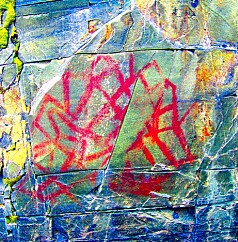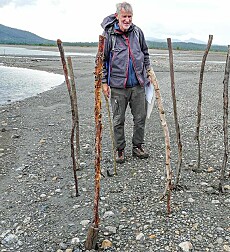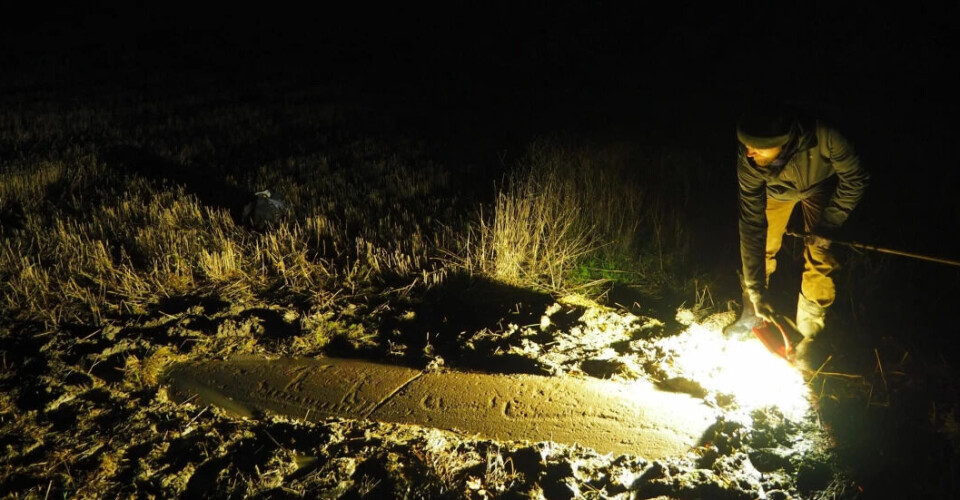
Three guys with torches have found almost 600 new rock carvings in their spare time
A group of friends has revolutionized the hunt for rock art in Norway.
Lars Ole Klavestad, Magnus Tangen and Tormod Fjeld can now add about 75 more rock carving sites to their list so far this year.
As recently as 2016, archaeologists knew about fewer than 500 such sites in the former county of Østfold in southeastern Norway.
Now that number is up to 1160 – and more and more sites are being discovered.
One day a week
“We go out in the dark about one day a week,” Klavestad says.
“It's all about using light in the right way. And over time, the experience we’ve gained has helped too.
The trio’s rock carving finds in recent years could mean that we have to change our perceptions of what the rock art can tell us about the people in Norway thousands of years ago.

Close to ocean and waterways
The group of friends from Østfold has revolutionized the hunt for rock carvings, or petroglyphs, in Norway.
In short, their secret is that they started with the idea of the sea level in the Bronze Age, around 3000 years ago. At that time, the ocean was about 15 metres higher in Østfold than it is today.
They look at maps and follow the contour lines in the landscape to see where the coastline must have been at that time.
We now know that a great deal of the ancient rock art in Norway was created by people who stayed close to the sea, often on a beach or svaberg, a smooth rock slope leading down to the sea.
Petroglyphs were also created along inland waterways that long ago stretched farther into the Østfold landscape, but which no longer exist due to the post-glacial rebound at the end of the Ice Age.
Fjeld, Tangen and Klavestad always conduct thorough analyses of the landscape before they go looking.
“It’s a pretty big thrill when we find something exactly where our analysis indicated that it could be,” they say.
The Østfold granite
Much of the coastal landscape in Østfold may have offered good pastures for humans and their animals 3000 years ago.
The Bronze Age people saw the potential for agriculture in this landscape.
The smooth surfaces and fine grain of the hard Østfold granite were also very suitable for carving petroglyphs. In a sense, you could say it was the same thing that Gustav Vigeland was aware of when he had the Monolith sculpture carved that stands in Frogner Park in Oslo.
Indre Østfold
This year the trio has also taken several trips to the more inland countryside of Indre Østfold.
The picture with the ships you see below might have been created by Indre Østfold residents who, several thousand years ago, were inspired by the art they had seen in other parts of the region out on the coast.
In Indre Østfold, the bedrock consists of coarser-grained gneiss.
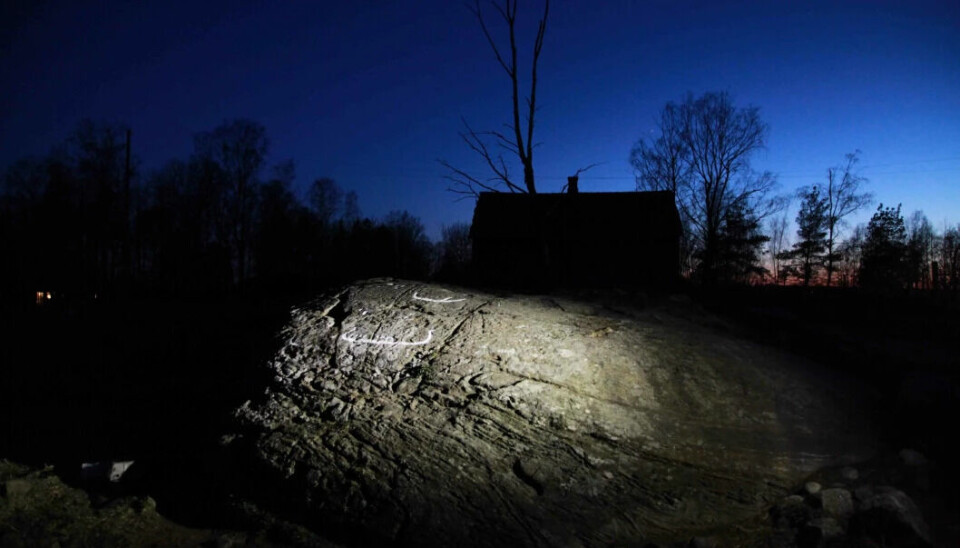
Carvings wrongly named
The Norwegian petroglyphs from the Bronze Age were for many years called farming carvings.
This name seemed obvious to archaeologists a hundred years ago. People and researchers found these images in the current agricultural landscape in Østfold and elsewhere in the country.
But the name is misleading.
Probably as many as 90 per cent of all rock carvings in Norway are linked to the sea, fjords and lakes.
A majority of all petroglyphs from the Bronze Age also have images of ships and boats. They gives us a clear hint that these are images that have more to do with the link to the sea and waterways.
But are they real ships or are they symbolic ships?
Although much might suggest the former, the ships that the three hobbyists found in Indre Østfold offer a hint for the latter.
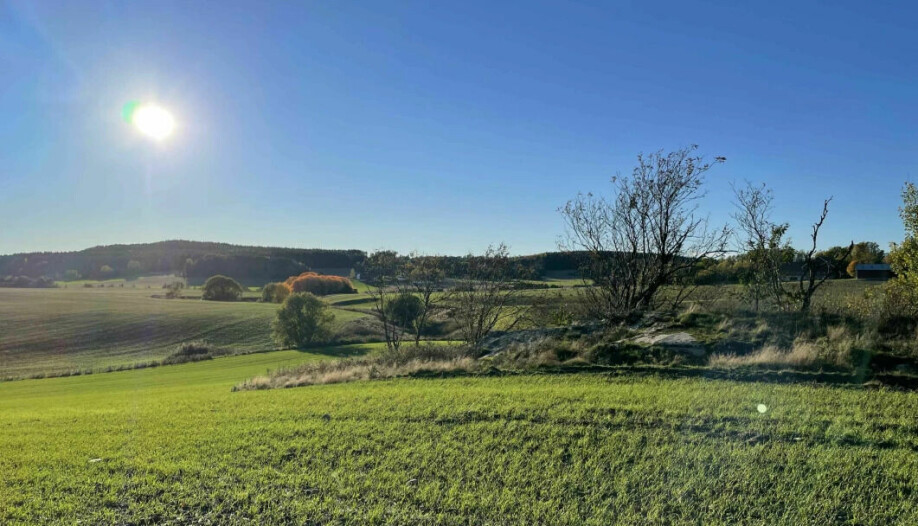
Light and shadow
Klavestad, Fjeld and Tangen reveal that light and shadow are absolutely crucial in the search for more petroglyphs.
One theory the trio has about the rock carvings is that they were intended to appear as fleeting shadow images.
They hypothesize that the pictures were designed to be seen at the right time of the year, and at the right time of day.
All three find that the light and shadow make the petroglyphs all the more fascinating.
In the autumn darkness, they use torches to bring out precisely this effect. Klavestad, Fjeld and Tangen describe this phenomenon in their recent research article in the journal Primitive Tider (Primitive Times) (link in Norwegian).
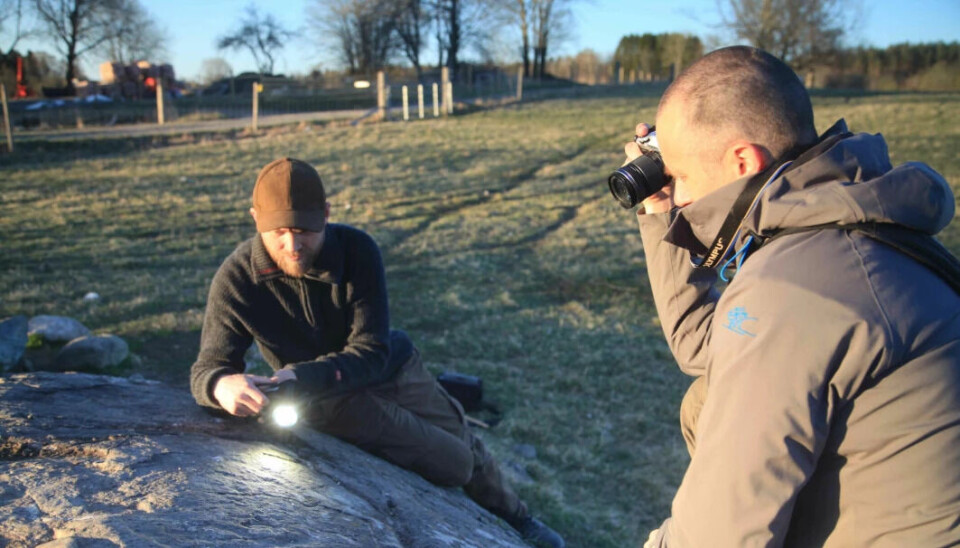
Delight in the natural landscape
The joy of being out in nature and in a culture the three have grown up in, with its variations in seasons, weather and vegetation, is also an important part of the experience in the hunt for new rock carvings.
“It enables us to understand how those who carved these figures thought. And how they found the right places to create their art,” says the trio.
They ensure that each new discovery is registered by the county council and documented by the Norwegian Museum of Cultural History.
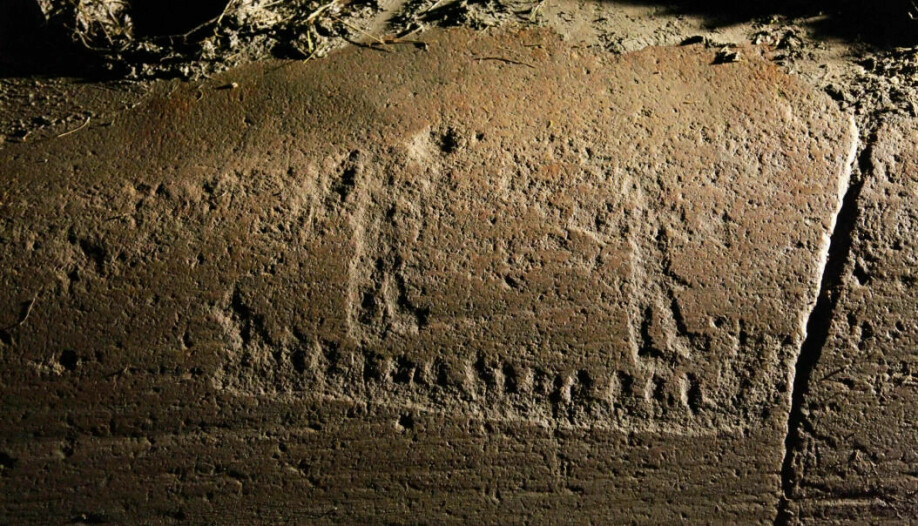
Ancient burial grounds
Fjeld, Klavestad and Tangen have recently made numerous petroglyph discoveries related to ancient burial grounds in Østfold from the Bronze Age and Iron Age.
These finds break with the traditional opinion that petroglyphs were only carved on marine clay sites. It also shows that the significance of the petroglyphs can hardly be explained in just one way.
“The rock carvings could have been a form of universal symbols with different meanings, depending on the context and time in which they were carved, as well as where in the landscape they were,” says Klavestad.
The finds of petroglyph stones in burial grounds could also mean that the tradition of carving such symbols has lasted longer than previously thought.
The rock carvings on the altar-shaped stone you see in the picture below were discovered on the well-known Hunnfeltet site with old graves in Borge in Fredrikstad municipality. There are several similar petroglyph stones near this one. Archaeologists have also found an exciting bronze forge at Hunnfeldet.
Now the three petroglyph hunters have set themselves a long-term goal. They want to discover enough more petroglyphs to increase the known petroglyph sites in Østfold to 2000.
“Difficult maybe, but hardly impossible,” say the three friends.


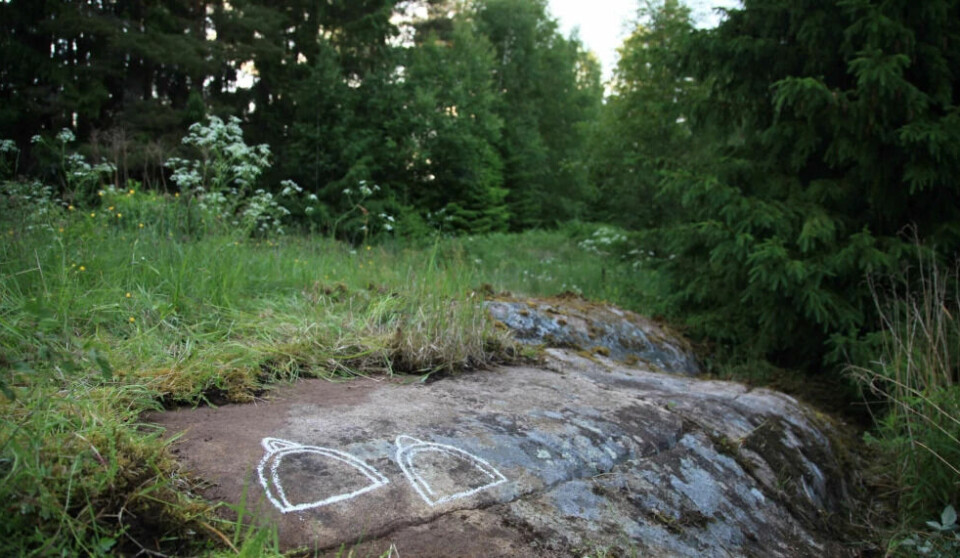
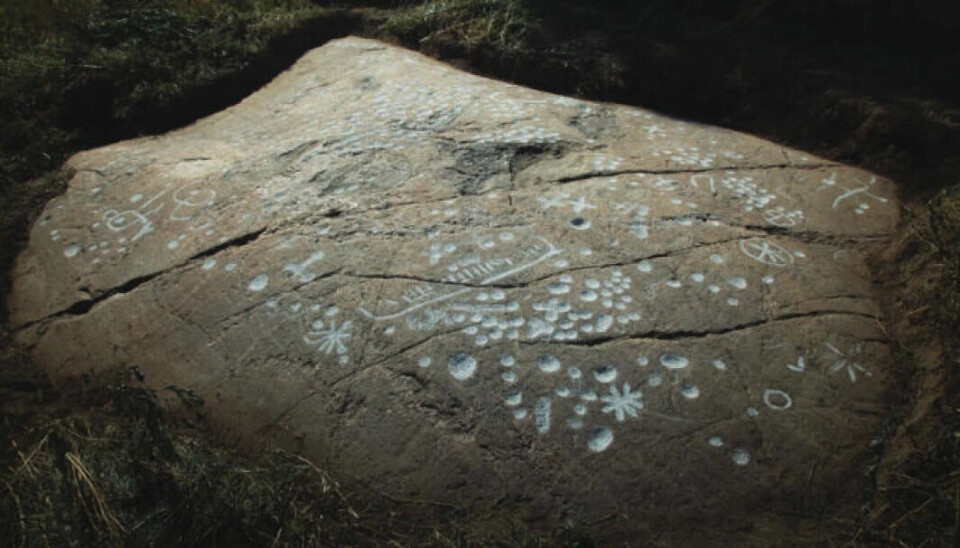
———
Read the Norwegian version of this article at forskning.no








